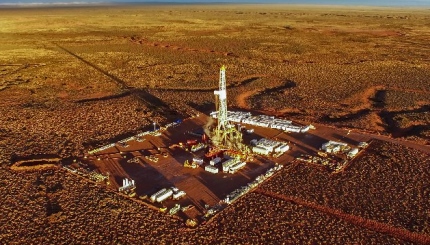The ongoing global oil shortage has triggered President Joe Biden’s call to shale producers to spend more of their profits on increasing output. But shale firms have been under pressure from shareholders for many years to focus on returns rather than production growth, this has been one of many contributors to the global oil shortage.
So, what are the shale companies doing?
They are trying to satisfy both parties by returning to existing wells and giving them a second, high-pressure blast to lift oil output for a mere fraction of the cost of finishing a new well.

Oil Fields Booster Shot
Reuters calls these revived wells, known as re-fractured wells, or “re-fracs,” as something of a “booster shot” for producers—a quick increase in output for a much smaller investment than a new well that can help to address, at least in part, the global oil shortage.
The most common re-frac method involves placing a steel liner inside the original well and then blasting holes through the steel casing to access the reservoir. In some cases, the process uses half as much steel and frac sand as a new well.
Some producers have dabbled in re-fracturing wells in the past. But currently this technique is winning broad adoption as technology improves, aging oilfields’ outputs erode, and oil companies try to do more with less to keep their shareholders happy.
A re-frac can be up to 40% cheaper than a new well, according to experts contacted by Reuters. And more importantly, it can double or triple oil flows from aging wells.
The cost savings has really gotten the attention of many oil companies due to the high levels of inflation affecting their costs. The inflation stems from shortages of just about everything—steel, diesel, frac sand and labor—which have combined to double oilfield inflation rates just since January. Overall costs are up about 20% over the past year.
“Techniques like re-fracturing will allow the industry to continue to harvest the oil and gas out of these reservoirs,” said Stephen Ingram, a regional vice president at the top U.S. hydraulic fracturing firm Halliburton (HAL) told Reuters.
Another benefit is that re-fracs do not require additional state permits or new negotiations with landowners. And, re-frac sites are less disruptive to the environment than new digs, because the existing well sites already have road access.
All of these factors tell me Halliburton is going to be doing a lot of business here in the U.S. for years to come. Let’s take a closer look.
Halliburton
The oilfield services giant Halliburton has, in the past couple of weeks, handed back a chunk of gains it made earlier in the year. Halliburton hit a four-year high in the first week of June, but is now trading about 25% below that level.
The price drop had nothing to do with the strength of its business, though. HSBC recently upgraded the stock to buy from hold saying the following:
Despite energy transition remaining a risk in the long run, we think the current environment is fairly favorable for Halliburton. With increasing activity in the North American oil market, we think Halliburton is well placed to capitalize compared to its peers due to its higher exposure to this market. We think the pricing environment is also in favor of service companies, which supports margin expansion and strong earnings growth in the medium term. Although we see some challenges with commodity price-induced inflation and supply-side constraints, we believe Halliburton should be able to offset this through price increases.“
Halliburton’s completion and production division revenue grew 26% in the first quarter of 2022 and the drilling and evaluation division grew revenue 22%. Margins expanded 440 basis points and started the year at 15% for the first time since 2010!
Margins are set to improve even further thanks to extreme tightness in the equipment market. For example, Halliburton’s hydraulic fracturing fleet remains sold out…in fact, the overall market appears all but sold out for the second half of the year.
Like most of the U.S. oil industry, Halliburton is investing right now more in short-cycle projects (like re-fracking). Halliburton president, chairman and CEO Jeff Miller said this during the first quarter earnings conference call:
I believe this pivot to short cycle barrels is great for Halliburton and sets up fantastic conditions for us to outperform. Short-cycle activity results in higher relative capital spending by operators aimed directly at the well bore for services Halliburton provides, as opposed to infrastructure investments required for long-cycle projects. Our strong technology portfolio and market footprint match this activity globally.
With re-fracking all the rage, Halliburton’s business will boom. That should support an increase in share price as well as its payout to shareholders to pre-pandemic levels.
Halliburton paid a dividend of $0.18 per share quarterly ($0.72 annually) until the pandemic hit in 2020. The annual dividend that year was only $0.32 per share, and it was just $0.18 per share in 2021.
But already in 2022, Halliburton has pushed the payout back up by $0.12 per share quarterly. I’m looking for a further sharp increase for the dividend payout in the second half of 2022. Halliburton stock is a buy anywhere in the low- to mid-30s.






